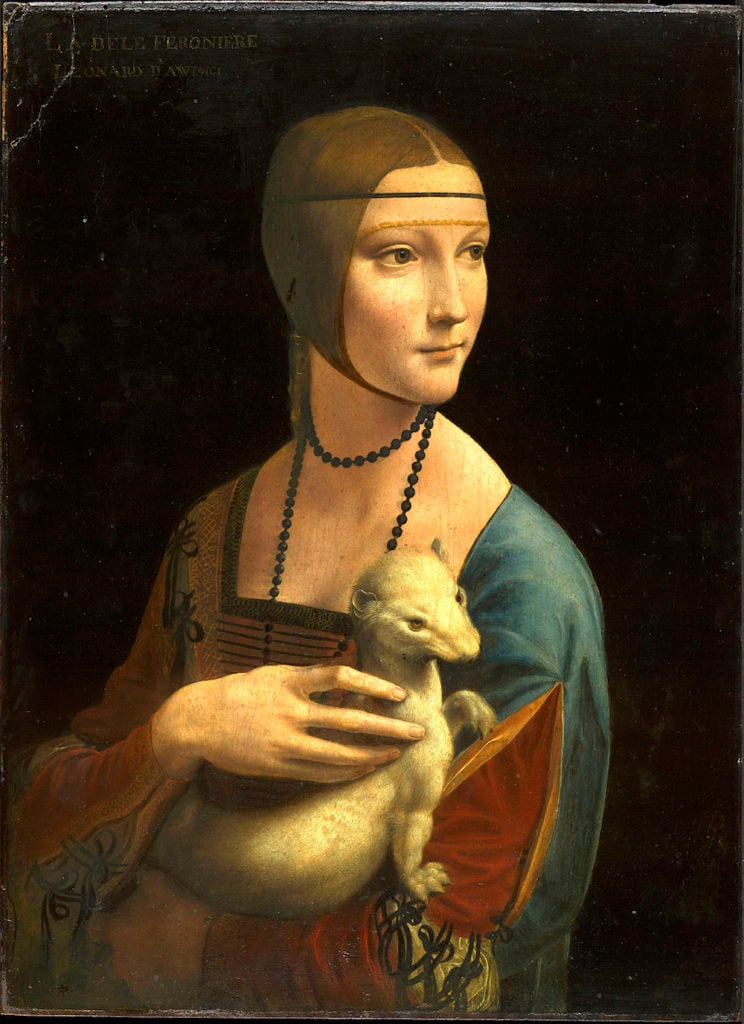
French scientist Pascal Cotte has astounded art historians with a major discovery about Leonardo da Vinci’s masterpiece Lady With an Ermine (1489-90), the BBC reports. Until now, it had been assumed that da Vinci’s composition had always included the white ermine, but Cotte’s three year-long investigation has revealed that the Italian artist actually painted the work not in one, but in three clearly differentiated stages.
His first version was a simple portrait, with no animal. In the second attempt, the painter included a small grey ermine. In the third and final stage, the animal was transformed into a large white ermine. Martin Kemp, a professor of history of art at Oxford University, said this was a “remarkable” revelation. “It tells us a lot more about the way Leonardo’s mind worked when he was doing a painting. It helps explain why he had so much difficulty finishing paintings,” he explained to BBC News.
The ermine plays a crucial symbolic role in the artwork, so the breakthrough is enormously meaningful not only technically, but also in terms of interpretation. The Lady With an Ermine is a portrait of Cecilia Gallerani, an alluring young woman from the Milanese court who was a favorite mistress of Ludovico Sforza, the married Duke of Milan. The duke, who was da Vinci’s patron and champion for 18 years, was nicknamed “the white ermine”. The progression in the painting might indicate a growing desire from the couple to affirm their relationship in a more public manner. The transformation of the ermine—from small and dark to muscular and white—could also indicate the duke’s wish for a more flattering “portrait.”
The technology that Cotte developed and employed to unveil the painting’s secrets is called “layer amplification method” (LAM). It works by projecting a series of intense lights on to a work while a camera measures the reflections. “The LAM technique gives us the capability to peel the painting like an onion, removing the surface to see what’s happening inside and behind the different layers of paint,” he told BBC News. “We have discovered that Leonardo is always changing his mind. This is someone who hesitates, he erases things, he adds things, he changes his mind again and again.”